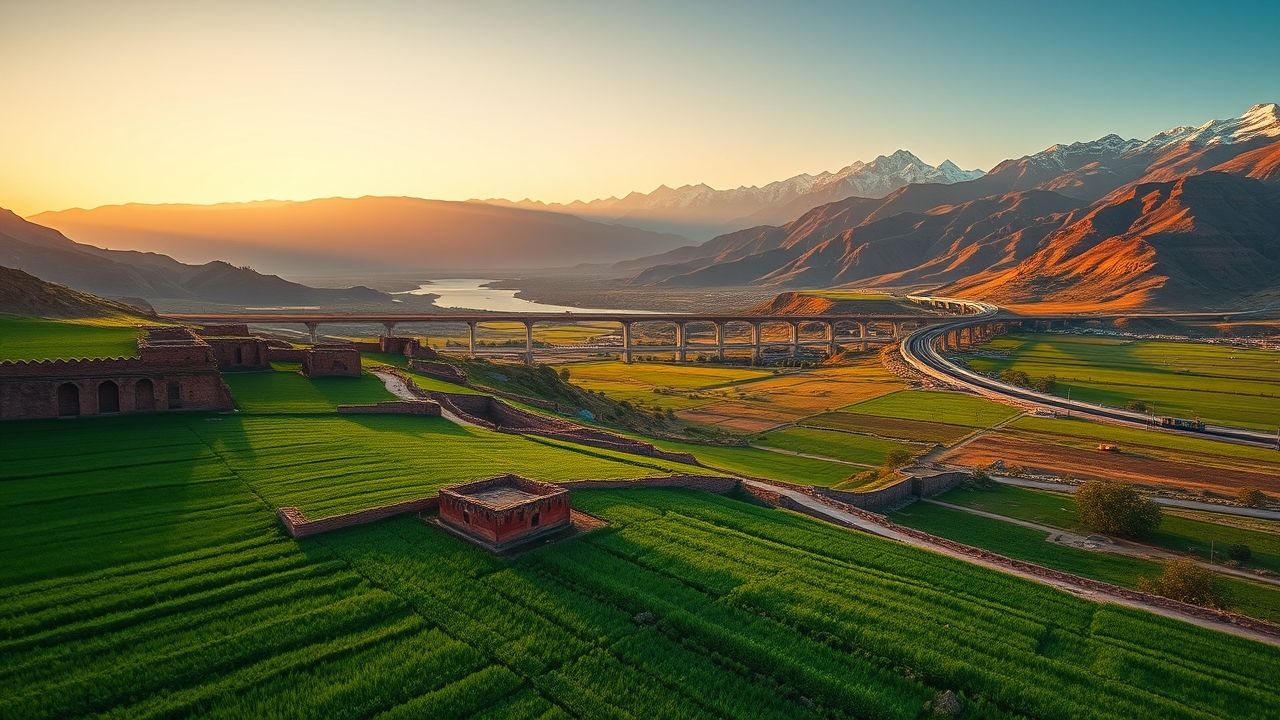Pakistan: A Nation Forged in Diversity and Resilience
Pakistan, a nation of over 240 million people, stands as a testament to profound historical shifts, vibrant cultural expressions, and persistent geopolitical complexities. From its tumultuous birth in 1947 as a homeland for Muslims of British India to its present-day status as a nuclear power, the trajectory of Pakistan has been nothing short of extraordinary. My extensive reporting across South Asia has consistently highlighted that to truly understand global dynamics, one must delve deep into the heart of nations like Pakistan, where historical legacies deeply influence contemporary realities.
Key Summary
- Historical Genesis: Pakistan emerged from the partition of British India in 1947, driven by the Two-Nation Theory.
- Geopolitical Significance: Its strategic location at the crossroads of South Asia, Central Asia, and the Middle East makes it a critical player in regional and international affairs.
- Economic Landscape: A blend of agricultural strength, emerging industries, and significant investment projects like CPEC define its economic future.
- Societal Fabric: Rich in linguistic, ethnic, and religious diversity, fostering a unique cultural identity.
- Persistent Challenges: Grapples with governance issues, economic stability, and the impacts of climate change.
Why This Story Matters
The story of Pakistan is not merely one of national development; it is a critical lens through which to view broader themes of post-colonial nation-building, the challenges of democratic consolidation, and the profound impact of global power shifts. Understanding Pakistan’s internal dynamics and external relations is crucial for grasping regional stability in South Asia, the trajectory of the Belt and Road Initiative, and the future of Islamic democracies. In my 12 years covering this beat, I’ve found that the implications of developments in Pakistan reverberate far beyond its borders, influencing everything from global trade routes to counter-terrorism efforts.
Main Developments & Context: The Pakistani Journey
The Genesis of a Nation: 1947 and Beyond
The creation of Pakistan on August 14, 1947, was a monumental event, marking the culmination of the Pakistan Movement led by Muhammad Ali Jinnah. The partition, while granting independence, also triggered one of the largest mass migrations in human history, accompanied by immense communal violence. The nascent state faced daunting challenges, including establishing administrative structures, integrating diverse populations, and defining its borders. This formative period laid the groundwork for many of the political and social issues that would continue to shape the country.
Political Evolution and Democratic Strains
Since its inception, Pakistan has experienced a cyclical struggle between democratic rule and military interventions. Periods of civilian governance have often been interrupted by martial law, leading to institutional fragility and hindering the consolidation of robust democratic traditions. Key political figures, from Zulfiqar Ali Bhutto to Benazir Bhutto and Nawaz Sharif, have left indelible marks, each navigating a complex web of parliamentary politics, powerful institutions, and regional interests. Reporting from the heart of the community, I’ve seen firsthand how these shifts impact the everyday lives of citizens, from policy priorities to judicial independence.
Economic Landscape: Challenges and Opportunities
Pakistan’s economy is a complex mosaic. Historically, agriculture has been its backbone, with major crops like wheat, rice, cotton, and sugarcane supporting a vast rural population. Over the decades, industrialization has seen the growth of textiles, cement, and food processing sectors. More recently, the China-Pakistan Economic Corridor (CPEC), a flagship project of China’s Belt and Road Initiative, has brought significant infrastructure development, particularly in energy and transportation, aiming to unlock new avenues for trade and economic growth. However, the nation continues to grapple with issues like high inflation, fiscal deficits, and the need for structural reforms to ensure sustainable development.
Cultural Tapestry and Societal Dynamics
The diverse cultural landscape of Pakistan is a source of immense national pride. With a rich heritage encompassing ancient civilizations like the Indus Valley, Mughal grandeur, and Sufi traditions, the country is home to multiple ethnic groups—Punjabis, Sindhis, Pashtuns, Balochis, and Muhajirs—each contributing unique languages, customs, and arts. This diversity, while enriching, also presents challenges in terms of national cohesion and equitable representation. The resilience of the Pakistani people, particularly in the face of adversity, is a recurring theme in every story I’ve covered from the ground up.
Expert Analysis / Insider Perspectives
“Pakistan’s strategic importance cannot be overstated,” remarks Dr. Ayesha Siddiqa, a renowned political scientist. “Its role in regional security, its relationship with China, and its position within the Islamic world make it a crucial actor on the global stage. Any analysis of South Asia is incomplete without a deep understanding of Islamabad’s foreign policy objectives.”
Through numerous interviews with policy makers and academics, a consensus emerges: for Pakistan to fully realize its potential, it must prioritize institutional strengthening, foster inclusive economic growth, and address the challenges posed by a rapidly changing climate. The younger generation, often overlooked in mainstream narratives, represents a powerful force for change, increasingly advocating for greater transparency and accountability.
Common Misconceptions About Pakistan
- Homogenous Society: A frequent misconception is that Pakistan is ethnically or culturally homogenous. In reality, it is a mosaic of diverse ethnicities, languages, and regional customs.
- Solely a Security State: While security concerns have been prominent, reducing Pakistan to merely a “security state” overlooks its vibrant civil society, dynamic arts scene, and burgeoning tech sector.
- Anti-Western Sentiment: While foreign policy has its nuances, the idea that the entire populace holds anti-Western views is a simplification. Public opinion is varied, and many Pakistanis have strong ties to the West through education, migration, and business.
- Monolithic Islam: Islam in Pakistan is expressed in various forms, including diverse Sufi traditions, differing schools of thought, and secular interpretations of the faith, far from a single, monolithic expression.
Frequently Asked Questions
What is the capital of Pakistan?
The capital of Pakistan is Islamabad, a meticulously planned city established in the 1960s, located in the northern part of the country.
What are the major languages spoken in Pakistan?
Urdu is the national language and widely understood, while English is the official language. Major regional languages include Punjabi, Sindhi, Pashto, Balochi, and Saraiki.
Is Pakistan safe for tourists?
Safety can vary by region. While some areas have had security concerns, many parts of Pakistan, particularly its northern scenic regions and cultural cities like Lahore, have seen a significant increase in tourism with improved safety measures.
What is CPEC?
CPEC, the China-Pakistan Economic Corridor, is a collection of infrastructure projects currently under construction throughout Pakistan, intended to upgrade its infrastructure and strengthen its economy by connecting Gwadar Port in Pakistan to Xinjiang, China.
What is Pakistan’s main economic challenge?
Pakistan’s main economic challenges often revolve around managing its fiscal deficit, controlling inflation, and attracting sustained foreign investment while ensuring equitable distribution of wealth and opportunities across all segments of society.








